In this edition of our additive manufacturing research digest CrAMmed, we take a look at the latest developments from the academic world. The studies below include material development, life-improving surgery, and new inventions in 3D printing.
Advances in materials
In a study titled, “Coffee-based colloids for direct solar absorption,” researchers at Politecnico di Torino, Italy, have showed the possibility of making colloids based on coffee, which have photothermal properties.
The colloids were made with Arabica coffee, distilled water, glycerol, and copper sulfate. The glycerol was added to make the colloid resistant to cold conditions and copper sulfate protects it against biofouling i.e. the accumulation of algae and other micro-organisms.
Solar collectors, which absorb heat from sunlight, were 3D printed to house the colloids using a Stratasys Dimension Elite. A TPU-based external frame was also 3D printed using an Ultimaker 3. This frame was designed to protect the borosilicate glass frame around the collector.
The authors write, “The proposed coffee-based colloids have shown competitive optical and thermal properties for direct solar absorption. Field tests, in good agreement with numerical models, have demonstrated that these fluids can provide similar performance to the traditional indirect absorption based on selective surfaces.”
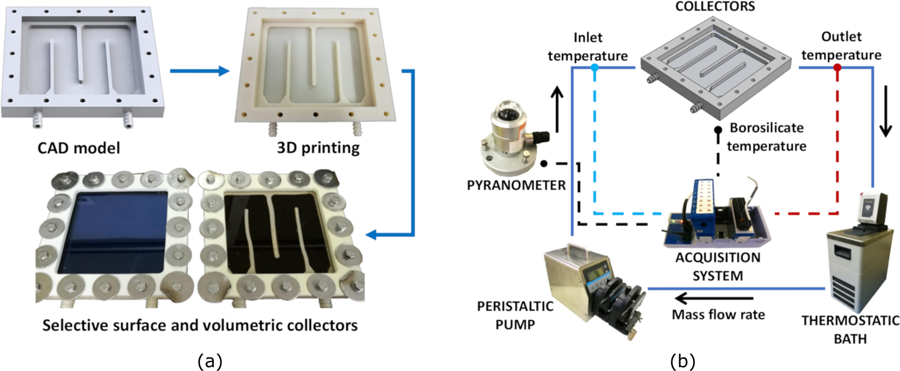
Elsewhere, researchers from Tsinghua University, Beijing, have devised a method to 3D print electronic fibers onto fabrics. This technology enabled the manufacturing of e-textiles, such as smart clothes and wearables devices.
Yingying Zhang, a chemistry professor at Tsinghua University and co-author of the research, explained, “We used a 3D printer equipped with a home-made coaxial nozzle to directly print fibers on textiles and demonstrated that it could be used for energy-management purposes.”
“Our long-term goal is to design flexible, wearable hybrid materials and electronics with unprecedented properties and, at the same time, develop new techniques for the practical production of smart wearable systems with integrated functions, such as sensing, actuating, communicating, and so on.”
The research was published in a paper titled, “Printable Smart Pattern for Multifunctional Energy-Management E-Textile“.
In other advanced material related research, a Stockholm University team have developed a 3D printable hydrogel ink containing metal-organic frameworks (MOFs). Often naturally porous, MOFs are valuable to the field of biomedicine, e.g. creating drug delivering devices, and also for desalination purposes.
The research published in the Advanced Functional Materials journal under the title, “CelloMOF: Nanocellulose Enabled 3D Printing of Metal–Organic Frameworks“, explains, “We have successfully introduced a new processability route of MOFs using 3D printing of TOCNF incorporated with ZIF-8 and MIL-100 (Fe), prototypical MOFs.”
The authors conclude, “We believe that this work provides a new proof-of-concept prospect for MOFs processing that is flexible, simple, fast, promising for large-scale production and for uptake and release of a variety of guest molecules.”
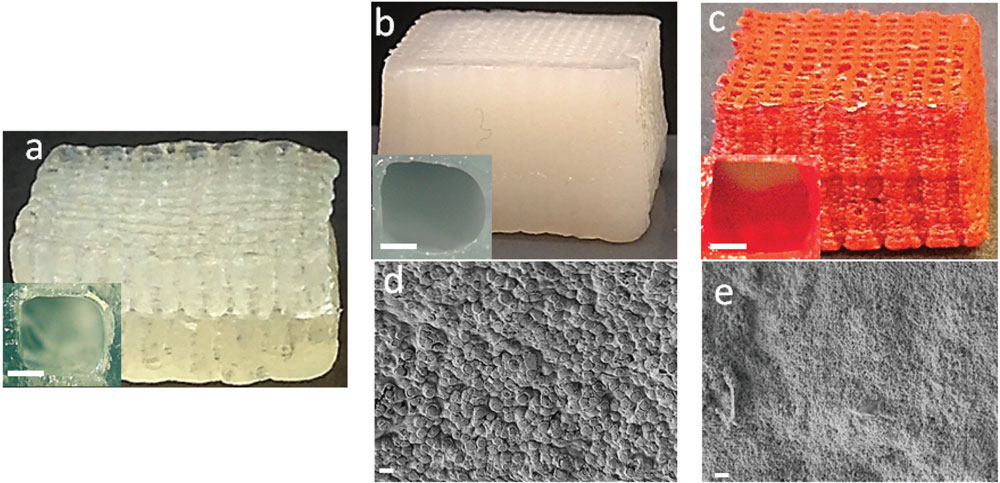
And, at Aichi Institute of Technology, Japan, researchers have evaluated new method to test the tensile strength and degradation of mechanical properties of 3D printed PLA parts. Using a saline solution the team studied four different scanning: parallel, vertical, parallel-and-vertical, and cross-hatched. The 3D printed parts were also tested against PLA injection molded parts for comparison.
The full methodology is discusses in “Evaluation of the Deterioration of the Mechanical Properties of Poly(lactic acid) Structures Fabricated by a Fused Filament Fabrication 3D Printer.”
Healthcare with additive precision
Oral drug delivery is one of the most convenient methods of medicinal drug intake. However, this mode still presents challenges, such as poor bioavailability of the intended drugs. Bioavailability is judged on the basis of dissolution, permeability, and solubility of the medicine.
Scientists at UC Berkeley-UCSF and Lilly Research Laboratories have developed a micro-scale 3D printed drug delivery system. It was fabricated with Eudragit polymers using drop-on-demand 3D printing and inkjet printing. The microdevices were then tested for stability and controlled release of drugs.
The study, printed as “Bottom-Up Fabrication of Multilayer Enteric Devices for the Oral
Delivery of Peptides“, concluded, “This approach represents a uniquely scalable and flexible strategy for microdevice fabrication that overcomes limitations in loading sensitive biologics and in the tuneability of device geometries that are inherent to traditional microfabrication strategies.”
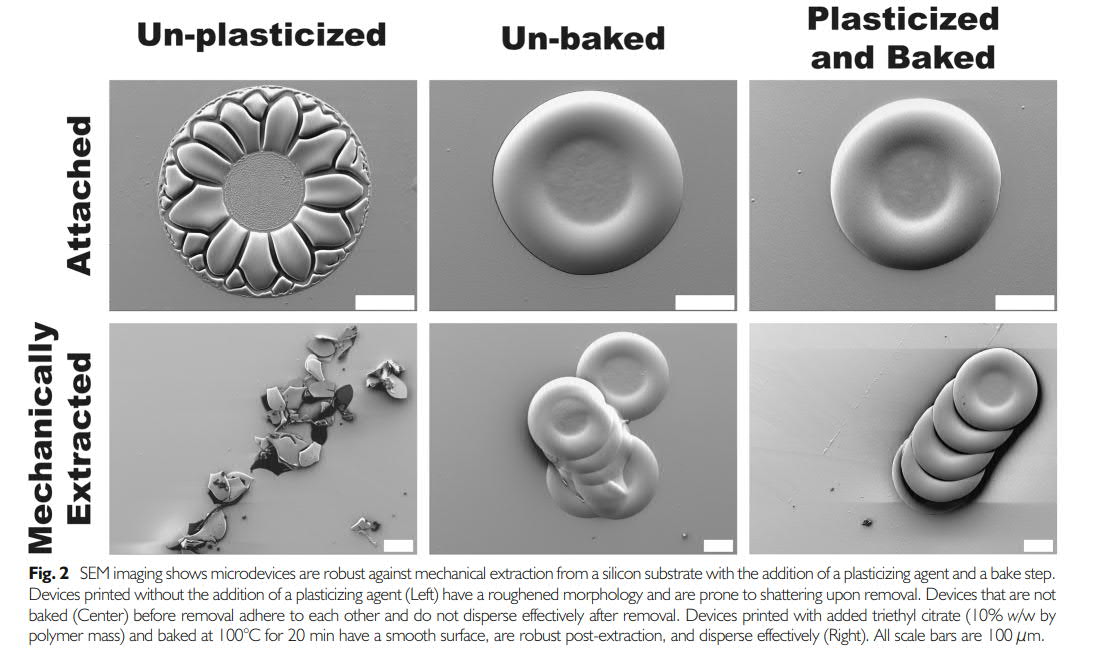
In a case study from The Fourth People’s Hospital of Zigong, surgeons used 3D printed models of patient-specific pelvic models to assist in surgery. Findings show that, “Computer design combined with 3D printing technology to make personalized pelvic model and navigation template applied to unstable pelvic fractures, is helpful to accurately place sacroiliac screw, reduce the operation time, intraoperative blood loss, and the fluoroscopy times, has good waiting time for weight-bearing exercise and function, and it is an optional surgical treatment for unstable fractures.” The findings are published in the paper, “Effectiveness analysis of three-dimensional printing assisted surgery for unstable pelvic fracture.”
Interest in patient-specific treatments and surgeries also led Istituto Ortopedico Galeazzi‘s researchers to evaluate the efficiency of patient-specific 3D printed guide and free-hand techniques for pedicle screw implantation. According to a paper from this team, errors in pedicle screw positioning is one of the most common problems in spinal surgery. And further complications can be life-threatening or could lead to permanent neurological damage.
“Patient-specific guides reduced significantly the incidence of pedicle screw malpositioning compared to the standard free-hand technique […]” the authors state. “The difference was statistically significative.” Furthermore, “the patient-specific guided technology reduced the intraoperative exposure to radiation and the surgical time of the implantation phase. No differences were observed in the total time of surgery. No increase in adverse effects was observed.”
Results are published in “Pedicle screw insertion with patient-specific 3D-printed guides based on low-dose CT scan is more accurate than free-hand technique in spine deformity patients: a prospective, randomized clinical trial.”
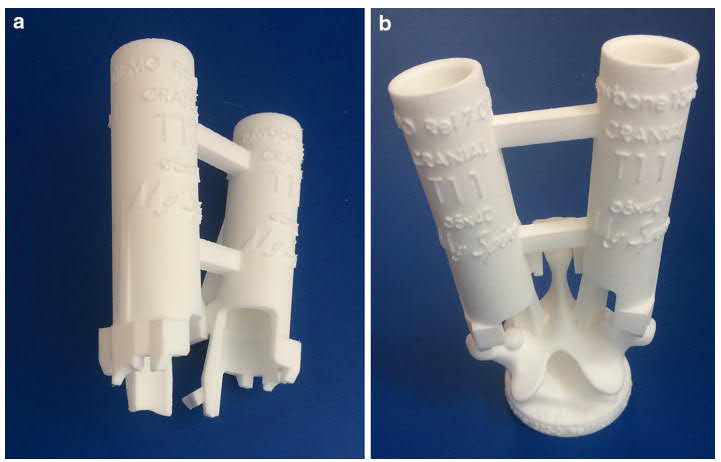
Patents from Purdue, EOS and Boeing
In 3D‐Architected Soft Machines with Topologically Encoded Motion, Purdue University engineers have created a low density, 3D printed soft robot, made using Voronoi tessellation.
The tessellation enables the randomization of flexible lattices that Purdue Assistant Professor Ramses Martinez explains, “can perform complex motions such as gripping or crawling with ease.” “This work,” he continues, “constitutes a step forward toward the development of autonomous and lightweight soft robots.”
“The capability of [Architected Soft Machines] to change their body configuration and gait to adapt to a wide variety of environments has the potential to not only improve caregiving but also disaster-response robotics.”
The technology has been patented through Purdue University Office of Technology Commercialization.
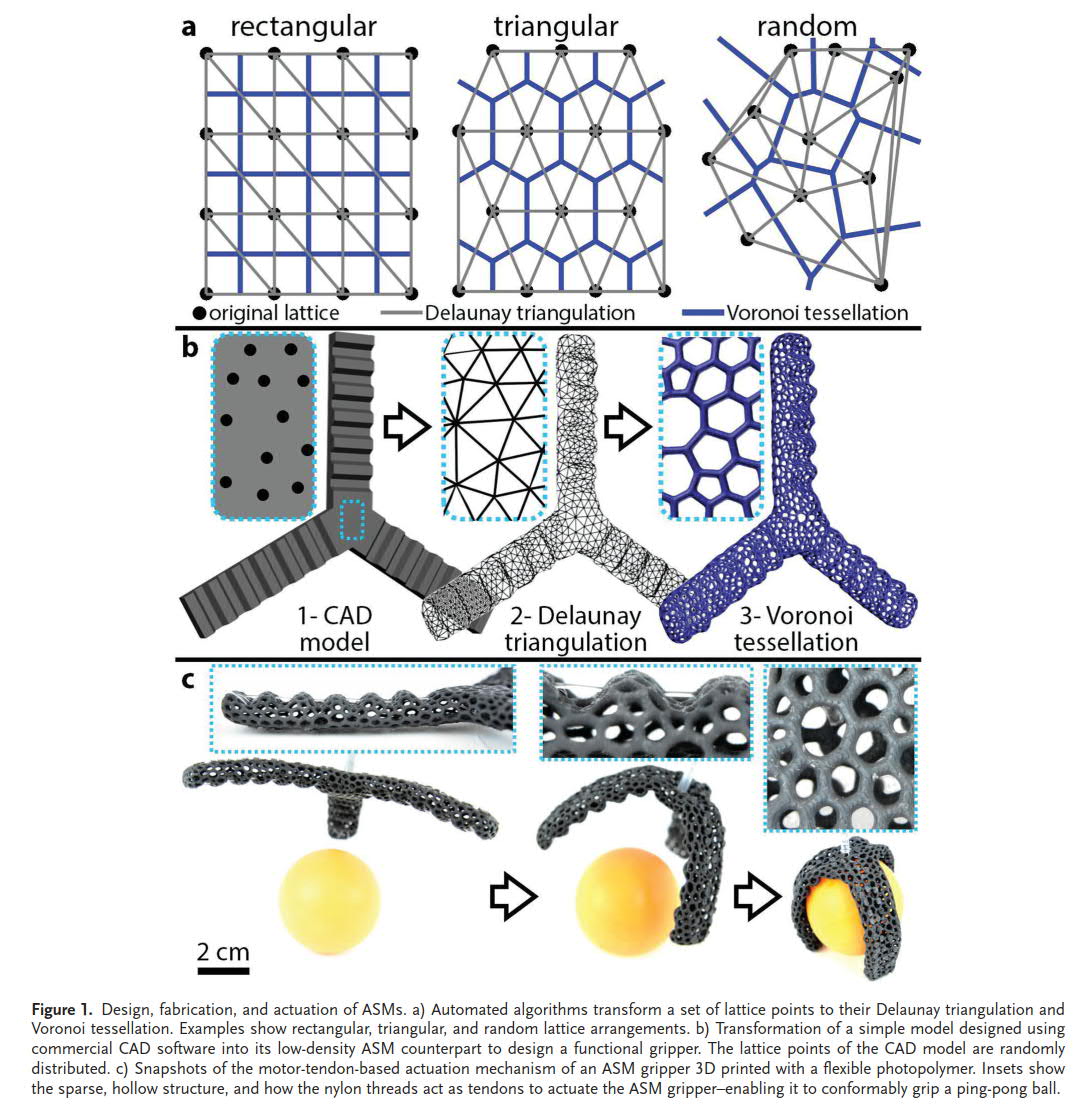
Two French inventors, Danaë Blondel and Laurent Juppé have been granted a U.S. patent for a cloud-based software for rendering images into 3D objects. According to the patent description, “the present invention’s purpose is not to develop a 3D scanner but to use three dimensional parameters to recognize objects.”
Using camera images of an object the software maps myriads of point clouds of an object to creates a 3D rendering without the need to use a professional scanner. As declared in the documentation, “The application is able to identify and treat essential 3D parameters as key points of an object, such as peaks, tops, edges, shapes, reliefs, as well as its texture, colors, materials.”
Furthermore, the system uses a cloud server to construct the 3D model of an object. The images that are used are compared and matched with a database of 3D objects, a search “comparing the 3D points cloud reconstruction of the object with 3D points clouds of known objects stored in the 3D database.”
Blondel and Juppé’s patent is filed and published under the title “System and Method for Object Recognition”
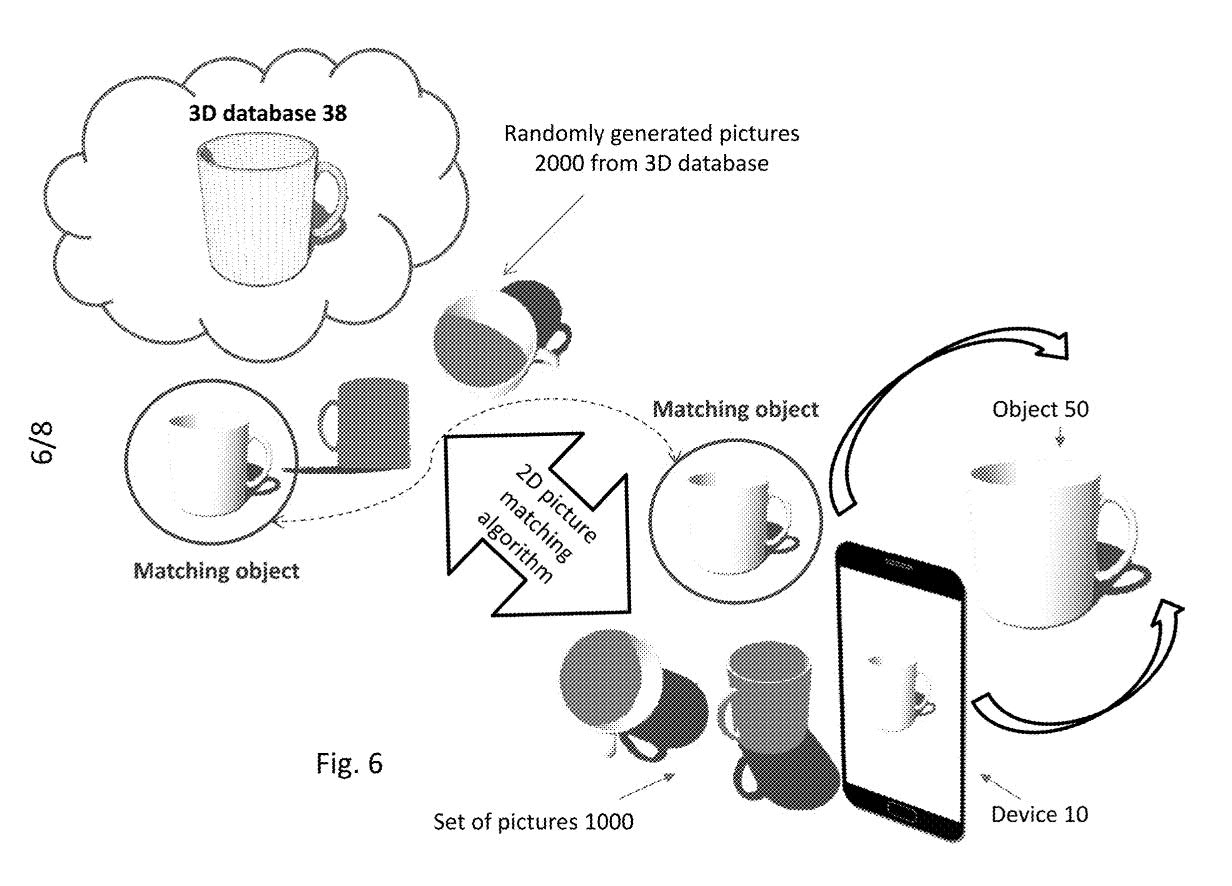
In another approved patent, German 3D printer manufacturer EOS has found a new way to control the spread of the metal powder in powder bed fusion machines. The patent titled, “Optical Powder Spreadability Sensor and Methods for Powder-Based Additive Manufacturing“, describes “an apparatus for and method of determining spreading behavior of a powder material during an additive manufacturing process.”
The description continues, “The method deposits a powder mound, moves a spreader to distribute a layer of powder over a build supported on a build area, operates an energy source to cast intercept the powder mound in the path of the source and onto an optical sensor during displacement of the powder mound, and analyzes an output of the optical sensor to identify features relating to the spreading behavior of the powder.”
Taking 3D printing materials research forward, a patent assigned The Boeing Company discloses a way to 3D print fabric composites. In “Additive Manufacturing Fiber Composites And Related Systems And Methods“, a composite is mixed with innovative photocurable material which makes it solidification possible.
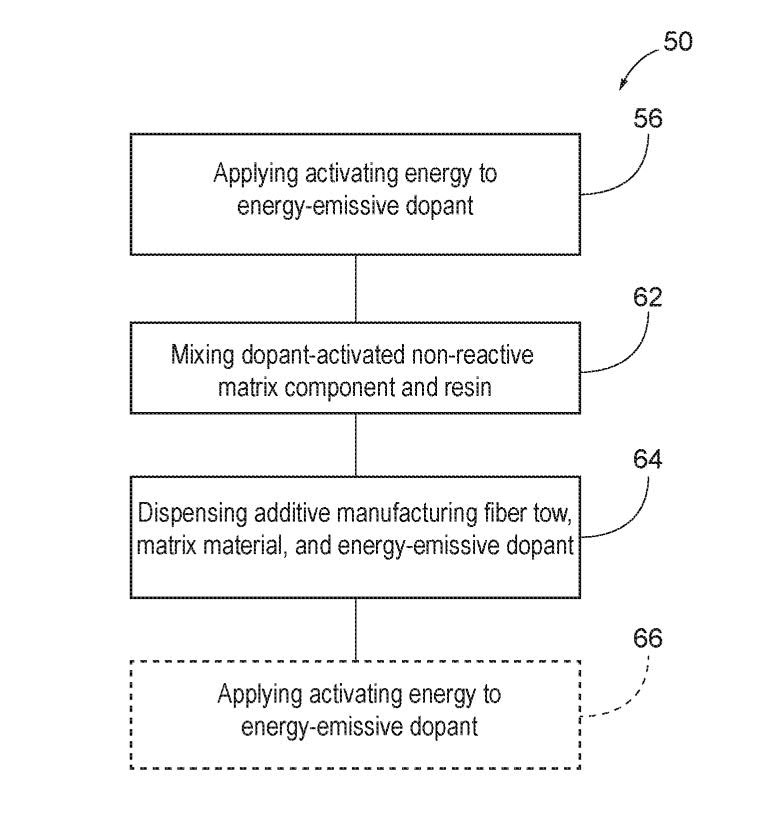
Vote now for the best research/academic team in the upcoming 2019 3D Printing Industry Awards.
To learn more about the latest research in additive manufacturing subscribe to our 3D printing newsletter and join us on Facebook and Twitter.
Visit our 3D Printing Jobs page to get hired by an industry leader in 3D printing.
Featured image shows CrAMmed logo over an image of motion programming of the ASM. Image via Wiley.


